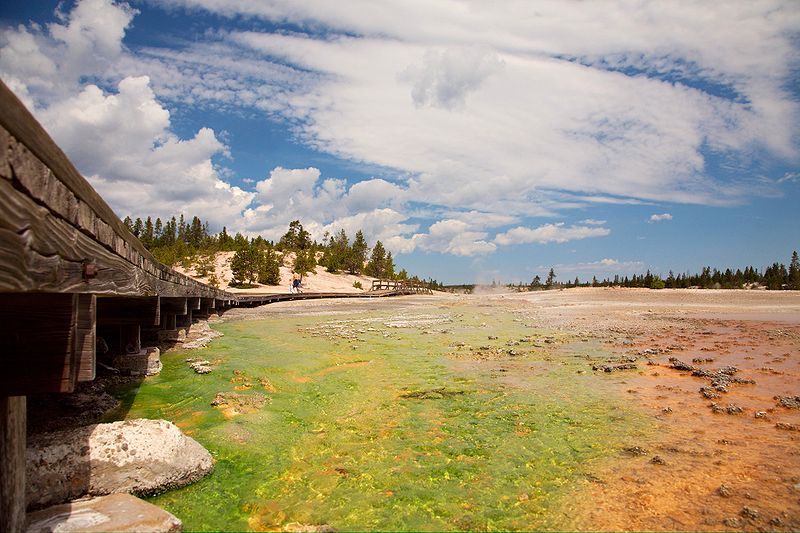
Life in the Extremes
Cyanidium caldarium is an obligate acidophile. This means that its environment has to be between a pH of 0.05-5.0 in order to survive. This organism prefers a pH of between 2 and 3. There are three main habitats where Cyanidium caldarium can be found: hot streams, moist acidic soils, and bogs.
While the geysers at Yellowstone National Park are beautiful to look at, they provide a challenging habitat for the organisms living downstream. Near the mouth of the geyser, only certain kinds of bacteria and archaebacteria can survive. Further away from the geyser, blue-green bacteria like Nostoc thrive. Further downstream, Cyanidium caldarium thrives in areas that are too warm for other eukaryotes to handle. It thrives i
n the temperature range of 35-55 degrees Celsius. Even further downstream, eukaryotic fungi and green algae, like Chlamydomonas Reinhartii, outcompete Cyanidium.This habitat is not limited just to Yellowstone. Acidic hot streams are found world wide, from Iceland to Japan. If you look in any of these streams it is almost a guarantee that you will find Cyanidium caldarium!
Cyanidium can also survive in soils that are moist and acidic. Although colonies in this habitat are not as impressive, they can survive at lower temperatures than in hot streams because they do not face as much competition.
A bog is an acidic, stagnant, nutrient-poor wetland. In bogs, only certain hardy organisms like pitcher plants and venus fly traps can survive. These organisms compete with Cyanidium for scarce nutrients along the water's edge. Click here to learn more about bogs.
To survive in these unique environments, Cyanidium caldarium has developed unique adaptations. For example, the lipids in its cell membrane are comprised of less unsaturated fatty acids than the membranes of plants and other algae. This is believed to be because the membrane does not need to be as fluid at high temperatures in order to grow.
Although its surroundings are very acidic, something in Cyanidium’s membrane keeps its cytoplasm at a neutral pH.
Unlike most algae, Cyanidium stores energy in the form of glycogen rather than starch. To learn more about how this organism acquires its nutrients go to the nutrition page.
Want to learn more about extremophiles? Check out Giant Tube Worms!
